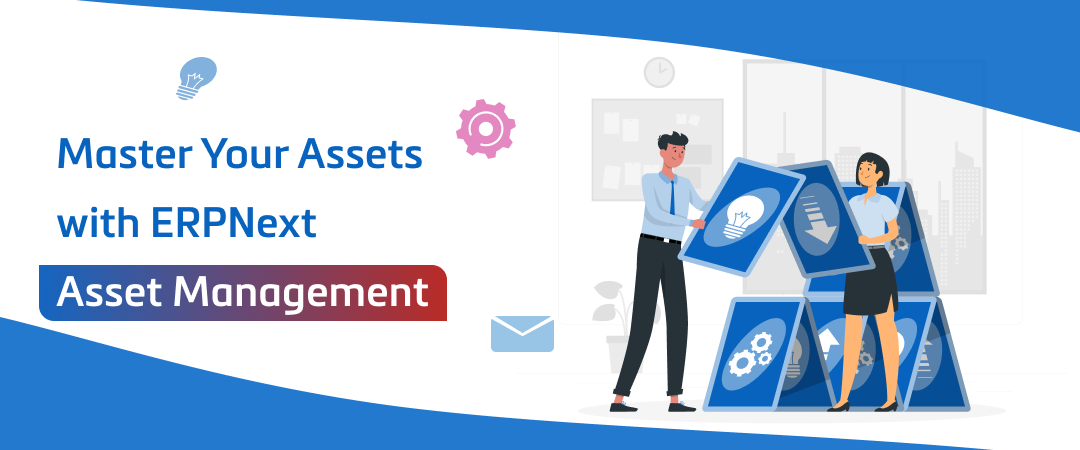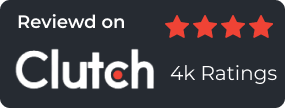
Master Your Assets with ERPNext Asset Management

Every successful business has assets as their backbone. From items like office chairs and other equipment to employee’s contribution and efficiency, also the success of an organization.
As businesses have a large number of assets managing them is a tedious process. An effective asset management system is crucial for every business. A powerful tool is required, and here comes ERPNext Asset Management.
This tool redefines the business by offering a centralized platform to oversee the asset management from acquisition to disposal.
Let’s know more on how this amazing tool can transform asset management for businesses in this blog.
And it’s Time to Get In!
Talk to Our Experts About Your Business Needs | Schedule Demo WhatsApp | Skype
What is an Asset?
Assets are a valuable item for an organization. Mostly assets are categorized into 2 types:
- Tangible Assets
- Intangible Assets
Computers, printers, vehicles, and office furniture are tangible assets. Employees, trademarks, or software licenses are intangible assets.
Assets typically have a useful life spanning several years. Instead of analyzing the full cost of purchase, accounting rules spread its economic value over its useful life.
Just like, let’s buy a laptop, which costs around INR 80,000, with 3 years of annual expense it could incur INR 20,000. ERP simplifies these calculations, adhering to the rules and regulations of different countries.
Talk to Our Experts About Your Business Needs | Schedule Demo WhatsApp | Skype
Why Choose ERPNext Asset Management?
ERPNext provides a robust and intuitive framework for asset management. Here are the reasons why both SME and large enterprises prefer ERPNext asset management:
- Comprehensive Tracking: ERPNext monitors assets throughout the lifecycle, from procurement to disposal.
- Data-Driven Insights: A ERPNext access detailed reports and analytics to evaluate asset performance and make predictive decisions.
- Seamless Integration: ERPNext links procurement, finance, and maintenance modules for complete asset management.
Key Features of ERPNext Asset Management
Comprehensive Asset Tracking:
Businesses can monitor their assets with ERPNext implementation from acquisition to disposal. This feature makes every asset is accounted for accuracy and visibility.
- Accuracy: Maintain detailed records of acquisition, usage, maintenance, and disposal.
- Visibility: Gain real-time updates on asset status and location.
- Efficiency: Eliminate manual errors by centralizing asset data.
Customizable Asset Categories:
Organizations systematize their assets into categories customized to their specific needs.
- Flexibility: Create custom categories based on type, department, or location.
- Organization: Structure assets systematically for easy access.
- Scalability: Adapt categories as the business grows or evolves.
Depreciation Management:
Track asset value over time to ensure compliance and financial transparency.
- Compliance: Adhere to accounting standards by accurately calculating depreciation.
- Decision-Making: Use depreciation data to plan maintenance or replacements.
- Financial Transparency: Provides stakeholders with a clear insight into asset value.
Maintenance Scheduling:
ERPNext makes businesses plan routine maintenance to optimize asset performance and extend lifespan.
- Preventive Maintenance: Downtime and repair costs are reduced by scheduling tasks proactively.
- Downtime Reduction: Schedule maintenance during non-critical periods.
- Cost Savings: Extend asset longevity with timely care.
Asset Location Tracking:
Keep track of asset locations in real time to improve inventory management.
- Visibility: Quickly locate assets to reduce search time.
- Inventory Management: Track movements across locations or departments.
- Security: Prevent loss or theft by monitoring asset locations.
Barcode and QR Code Integration:
Streamline asset identification with barcode and QR code technology.
- Organization: Simplify asset tracking with quick scans.
- Accuracy: Reduce errors through automated updates.
- Accessibility: Access asset data on the go with mobile scanning.
Asset History and Audit Trail:
Maintain a detailed record of all activities related to each asset.
- Transparency: Document asset activities to uphold accountability.
- Compliance: Use audit trials to help ensure regulatory compliance.
- Troubleshooting: Better decision-making is done by using audit trials to help ensure regulatory compliance.
Integration with Procurement and Finance Modules:
Ensure data consistency and streamline workflows by linking with procurement and finance.
- Data Consistency: Synchronize asset data across modules.
- Workflow Automation: Repetitive processes are automated by minimizing manual efforts.
- Streamlined Processes: Link purchasing, invoicing, and accounting seamlessly.
Asset Performance Analytics:
Leverage insights to optimize asset utilization and performance.
- Insight Generation: Analyze key performance metrics like uptime and maintenance costs.
- Optimization: Identify areas for improvement.
- Data-Driven Decisions: Use analytics for strategic planning.
Document Management:
Attach relevant documents to asset records for easy access.
- Centralization: Store warranties, manuals, and contracts in one place.
- Accessibility: Retrieve important documents instantly.
- Data Integrity: Ensure complete and accurate documentation.
Multi-Location Support:
Manage assets across multiple locations from a centralized system.
- Centralized Control: Oversee assets at different branches.
- Standardization: Ensure consistency across locations.
- Collaboration: Share data seamlessly across departments.
User Role-Based Access Control:
Protect sensitive data by assigning role-based permissions.
- Security: Restrict access to authorized users.
- Granularity: Define roles and permissions for precise control.
- Compliance: Ensure adherence to security regulations.
Talk to Our Experts About Your Business Needs | Schedule Demo WhatsApp | Skype
Benefits of ERPNext Asset Management
- Enhanced Financial Planning: Budgeting and investment decisions are made accurately with depreciation tracking.
- Operational Efficiency: Workflows are streamlined with centralized tracking.
- Cost Optimization: Preventive maintenance reduces repair costs and extends asset life.
- Regulatory Compliance: Automated calculations ensure adherence to standards.
- Informed Decision-Making: Analytics provide actionable insights for better management.
Real-Life Applications
- Manufacturing Industry: Optimize machinery performance and manage depreciation.
- IT Sector: Track IT assets like servers and software licenses.
- Healthcare Facilities: Manage medical equipment and ensure compliance with regulations.
Talk to Our Experts About Your Business Needs | Schedule Demo WhatsApp | Skype
On the Final Note
Asset management with ERPNext reshapes businesses who are aiming to streamline process operations and boost efficiency. With these above-mentioned features organizations can attain sustainable growth.
These features allow organizations to maximize asset value, reduce costs, and achieve sustainable growth.
As businesses can effectively monitor assets with ERPNext not only to enhance visibility and accuracy but also to enhance efficiency by centralizing tracking and neglecting errors.
Start your journey with ERPNext Asset Management today with iSQUARE, the leader in ERPNext implementation services and unlock the potential of effective asset management!














